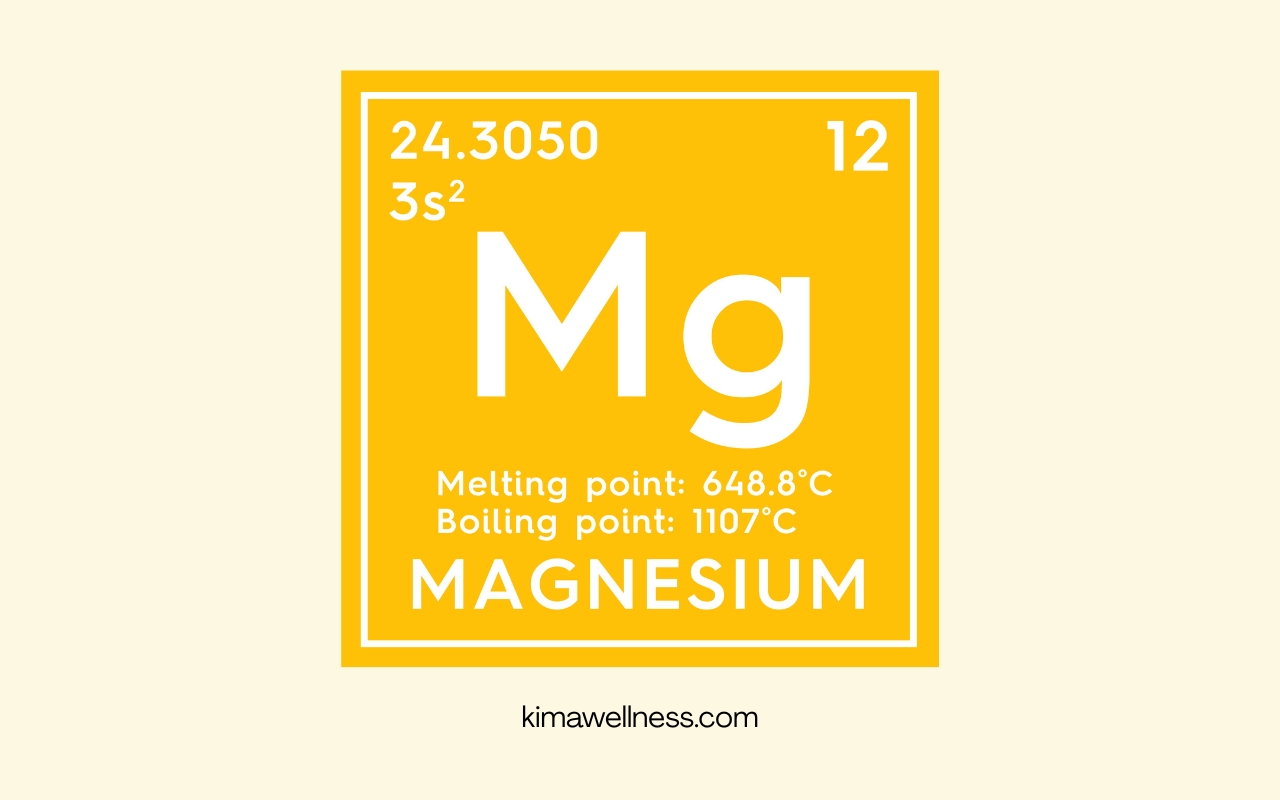
Magnesium is an essential mineral that plays a significant role in muscle function, nerve health, and overall pain management. While often overlooked, magnesium is now gaining attention as a key component in alleviating chronic pain, reducing inflammation, and supporting muscle recovery.
At KIMAWellness.com, our team of physical therapists and pain management experts recognize the importance of evidence-based strategies to enhance mobility, reduce discomfort, and optimize recovery. In this guide, we explore why magnesium is a game-changer in pain relief and how it can be effectively integrated into a wellness plan.
Why Magnesium is Essential for Pain Management and Recovery
Magnesium is involved in over 300 enzymatic reactions in the body, many of which are crucial for pain control and tissue repair. Key benefits include:
- Muscle Relaxation & Cramp Prevention: Helps prevent muscle stiffness, spasms, and cramping by regulating calcium and potassium balance.
- Nerve Function & Pain Modulation: Supports nerve health and may reduce neuropathic pain by blocking excessive nerve excitability.
- Inflammation Reduction: Plays a role in lowering inflammatory markers that contribute to chronic pain conditions.
- Joint & Bone Health: Works with calcium and vitamin D to maintain bone density and reduce joint discomfort.
- Sleep & Stress Recovery: Supports nervous system relaxation, which aids in reducing tension-related pain and improving sleep quality.
Are You Getting Enough Magnesium?
Despite its importance, many people do not get enough magnesium from their diets. Certain factors increase magnesium depletion, including:
- Chronic stress and high cortisol levels
- Diets low in whole foods and high in processed ingredients
- Frequent muscle soreness or tension due to exercise or chronic pain conditions
- Digestive disorders that impair nutrient absorption (IBS, Crohn’s disease)
- Medications such as diuretics and proton pump inhibitors that deplete magnesium levels
Signs of Magnesium Deficiency in Those with Pain Conditions
- Persistent muscle tightness, cramps, or spasms
- Increased sensitivity to pain or nerve discomfort
- Joint stiffness or chronic inflammation
- Difficulty sleeping due to pain or restlessness
- Anxiety, mood imbalances, and difficulty managing stress
How Magnesium Supports Pain Relief and Muscle Recovery
1. Muscle Relaxation & Tension Release
Muscle tension is a common issue for those dealing with chronic pain or recovering from injuries. Magnesium helps regulate calcium uptake in muscle cells, preventing excessive contractions and reducing spasms. For individuals experiencing fibromyalgia, tension headaches, or muscle stiffness, adequate magnesium intake may significantly improve symptoms.
2. Nerve Pain and Sensory Regulation
Magnesium is essential for nerve function and pain perception. It acts as a natural NMDA receptor antagonist, which helps regulate nerve excitability and may reduce neuropathic pain, such as sciatica or diabetic nerve discomfort.
3. Inflammation Control and Joint Health
Chronic pain conditions like arthritis and tendonitis are often linked to prolonged inflammation. Studies show that magnesium helps regulate inflammatory cytokines, potentially reducing joint pain and stiffness over time.
4. Stress Recovery and Sleep Enhancement
Pain and stress are deeply interconnected. Magnesium plays a vital role in lowering stress hormone levels and supporting the production of calming neurotransmitters like GABA. This, in turn, promotes deeper sleep, which is crucial for muscle repair and pain management.
Best Food Sources of Magnesium for Pain Relief
Incorporating magnesium-rich foods into your diet is a natural way to support pain management:
- Leafy greens (spinach, kale, Swiss chard)
- Nuts and seeds (almonds, pumpkin seeds, cashews)
- Whole grains (brown rice, quinoa, oats)
- Legumes (black beans, chickpeas, lentils)
- Fatty fish (salmon, mackerel)
- Dark chocolate (at least 70% cacao)
Choosing the Right Magnesium Supplement for Pain Management
If dietary intake is insufficient, magnesium supplementation may be beneficial. However, different forms of magnesium serve distinct functions:
- Magnesium Glycinate: Ideal for muscle relaxation, stress reduction, and sleep improvement.
- Magnesium Citrate: Highly absorbable and beneficial for digestion and hydration.
- Magnesium Malate: Known for its role in reducing muscle fatigue and managing chronic pain conditions.
- Magnesium L-Threonate: Supports cognitive function and may assist in nerve-related pain relief.
- Magnesium Chloride: Easily absorbed and often used topically for localized muscle relaxation.
How to Use Magnesium for Optimal Pain Relief and Recovery
- Post-Workout Recovery: Magnesium can help ease muscle soreness when taken after physical activity.
- Before Bed: Supports relaxation and may improve sleep for those with pain-related insomnia.
- Hydration Support: Pair with other electrolytes for better hydration and reduced muscle tension.
- Topical Application: Magnesium oils and creams can provide targeted relief for sore muscles and joints.
Final Thoughts: Magnesium’s Role in a Holistic Pain Management Plan
Magnesium is a vital, yet often underutilized, tool in pain management and muscle recovery. Whether you are dealing with chronic pain, recovering from an injury, or managing muscle tension from daily activities, ensuring optimal magnesium levels can make a significant difference in your overall well-being.
At KIMAWellness.com, we believe in a comprehensive approach to pain relief, incorporating nutrition, movement, and recovery strategies. Magnesium is a natural and effective way to support muscle health, reduce inflammation, and improve overall quality of life. If you suspect magnesium deficiency may be contributing to your pain, consult a healthcare professional to determine the best approach for your needs.